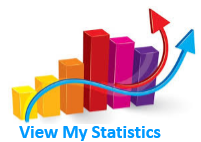BIAYA AUDIT DITINJAU DARI EFEKTIVITAS KOMITE AUDIT, PELUANG INVESTASI, KENDALA FINANSIAL DAN KOMPLEKSITAS PERUSAHAAN
DOI:
https://doi.org/10.26418/apssai.v2i2.35Keywords:
Audit Fee, Audit Committee Effectiveness, Investment Opportunities, Financial Constraints, Company ComplexityAbstract
The purpose of this study to examine the effect of audit committee effectiveness, investment opportunities, financial constraints and company complexity on the audit fee. This study uses a sample of companies listed on the IDX in 2016 – 2020 which disclose audit fees. The method to analyze the data using multiple linear regression analysis. The results shows that the effectiveness of the audit committee decrease audit fee. The investment opportunities and the company complexity increase the audit fees. However, the results of the study do not prove any significant effect of financial constraints on the audit fee. Suggestions for further research are that the company complexity is measured by the number of subsidiaries, including other factors such as corporate governance, size of public accounting firm, sales volatility and industrial sector.
Keywords: Audit Fee; Company Complexity; Financial Constraints; Investment Opportunities
Downloads
Published
How to Cite
Issue
Section
License
Copyright (c) 2022 by AuthorsLicense
APPSAI Accounting Review is licensed under Creative Commons Attribution 4.0 International License.
You are free to:
- Share — copy and redistribute the material in any medium or format for any purpose, even commercially.
- Adapt — remix, transform, and build upon the material for any purpose, even commercially.
- The licensor cannot revoke these freedoms as long as you follow the license terms.
Under the following terms:
- Attribution — You must give appropriate credit , provide a link to the license, and indicate if changes were made . You may do so in any reasonable manner, but not in any way that suggests the licensor endorses you or your use.
- No additional restrictions — You may not apply legal terms or technological measures that legally restrict others from doing anything the license permits.
Copyright
Authors retain copyright and grant the journal right of first publication with the work simultaneously licensed under a Creative Commons Attribution 4.0 International License that allows others to share the work with an acknowledgment of initial publication in this journal.
Authors are permitted and encouraged to post their work online (e.g., in institutional repositories or on their website) before and during the submission process, as it can lead to productive exchanges and earlier and greater citation of published work (See The Effect of Open Access).



